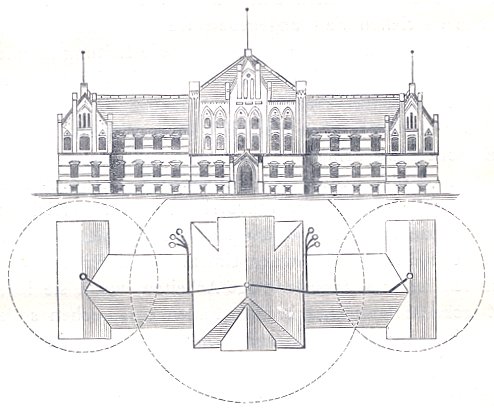Electrictiy
Today, we learn to live with electricity. The University of Houston's College of Engineering presents this series about the machines that make our civilization run, and the people whose ingenuity created them.
Electricity is wonderful stuff. I learned about electromagnets when I was a child. Straightaway, I split a length of lamp wire down the middle. I wrapped one half around a large nail. Then I stuck the two bare ends in a wall plug. The trouble was, I'd found out about electromagnets before anyone had told me about Ohm's law. It took five minutes for the blinding blue flash to clear. It took much longer than that to tell my father why our fuse box had all but vaporized.
Now we face a new electrical threat. The Harvard Medical School Health Letter tries to sift the effects of electromagnetic waves. We live our lives in electric fields. Are they hurting us? It's possible that they are. Charged particles ride on the membranes of every cell in our body. Electric fields can affect them. After all, microwave fields cook hamburger, X-rays are carcinogenic, and ultraviolet fields burn our skin.
But the intensity of a man-made electric field drops off rapidly as we move back from the source. The danger drops off with the frequency. Power lines, electric blankets, and hair dryers normally expose us to weak fields. And 60 cycles per second is a very low frequency, relatively speaking.
Studies disagree on the threat. Some show that common electric fields can cause cancer, cataracts, and dispepsia. Others show they don't. The ones that say they're dangerous don't support each another. They don't tell you which victims also smoked or inhaled organic solvents.
My guess is that we'll have to build a whole new set of protections against a minor, but real, risk. In the meantime, I'll be a little more careful about standing near electrical sources. I'll be a little more careful, but not a whole lot.
And I shall lament the end of summer -- the passing of childhood -- the days when I thought I could stick bare wires in wall plugs. I shall remember Ben Franklin harnessing lightning and living to tell about it. His imitators didn't fare as well. I shall look at pictures of the electric poineer Nikola Tesla, with millions of volts leaping from his hair. That was the same Nikola Tesla who wouldn't shake your hand for fear of germs.
As a child, I ran through thunderstorms watching lightning strike. As I child I knew I was immortal. Now I fear to see children die. It took the minds of children to corral electricity. It takes adults to put the bit in its teeth. We could fly kites in thunderstorms during the childhood of the electrical age. But the stakes are much higher when the empyrean life-giving ether of electricity flows around us every moment.
I'm John Lienhard, at the University of Houston, where we're interested in the way inventive minds work.
(Theme music)
Electromagnetic Waves: How Real a Hazard? Harvard Medical School Health Letter, (W.I. Bennett, ed.). Vol. 15, No. 5, March, 1990.
In this Episode, written in 1989, I bent over backward to give the anti-electric-field people their due. By 1997 the dangers of power lines had been shown to be truly inconsequential. For more on this matter, see Episode 1259.

Typical 19th-century Lightning rod arrangement
(from Elektro-technische Bibliothek, XXIX Band, Blitz-Schutvorrichtungen
Leipzig: A. Hartleben's Verlag, 1886)